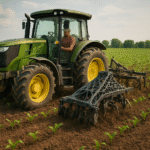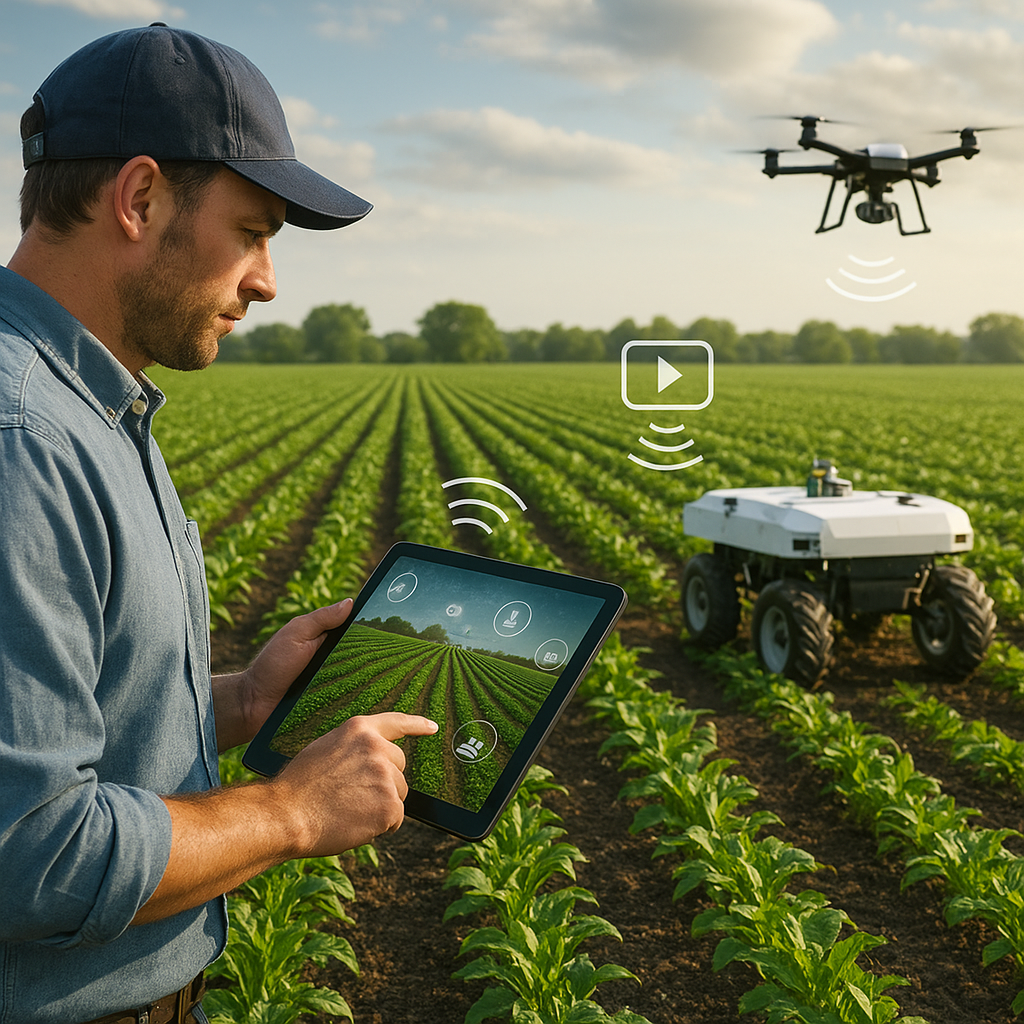Precision farming, also known as precision agriculture, is revolutionizing the way we approach food production, and robotics plays a pivotal role in this transformation. By integrating advanced technologies, farmers can optimize their operations, reduce waste, and increase yields, all while minimizing environmental impact. This article delves into the various ways robotics is enhancing precision farming and the future implications of these advancements.
Enhancing Efficiency with Autonomous Machinery
One of the most significant contributions of robotics to precision farming is the development of autonomous machinery. These machines, equipped with GPS, sensors, and artificial intelligence, can perform a variety of tasks with minimal human intervention. Tractors, harvesters, and planters are now capable of operating autonomously, ensuring that each task is performed with pinpoint accuracy.
Autonomous tractors, for instance, can plow fields, plant seeds, and apply fertilizers with a level of precision that is unattainable through manual labor. These machines use GPS technology to navigate fields and sensors to monitor soil conditions, ensuring that seeds are planted at the optimal depth and spacing. This not only maximizes crop yields but also reduces the amount of seed and fertilizer needed, leading to cost savings and environmental benefits.
Similarly, autonomous harvesters can identify and pick ripe crops with incredible accuracy. These machines use advanced imaging technology to assess the ripeness of fruits and vegetables, ensuring that only the best produce is harvested. This reduces waste and ensures that consumers receive the highest quality products.
Robotic Drones for Monitoring and Data Collection
Another area where robotics is making a significant impact in precision farming is through the use of drones. These aerial robots are equipped with cameras and sensors that can capture high-resolution images and collect data on crop health, soil conditions, and pest infestations. This information is invaluable for farmers, allowing them to make informed decisions about their crops.
Drones can cover large areas of farmland quickly and efficiently, providing real-time data that can be used to identify issues before they become major problems. For example, drones can detect early signs of disease or pest infestations, allowing farmers to take targeted action to protect their crops. This proactive approach not only saves time and money but also reduces the need for chemical treatments, promoting more sustainable farming practices.
In addition to monitoring crop health, drones can also be used for precision spraying. Equipped with advanced spraying systems, drones can apply fertilizers, pesticides, and herbicides with incredible accuracy. This ensures that treatments are applied only where needed, reducing the overall use of chemicals and minimizing their impact on the environment.
Robotic Systems for Livestock Management
Robotics is not limited to crop farming; it is also making significant strides in livestock management. Automated feeding systems, robotic milking machines, and health monitoring devices are transforming the way farmers care for their animals.
Automated feeding systems ensure that livestock receive the right amount of food at the right time, optimizing their growth and health. These systems can be programmed to deliver specific diets to individual animals, taking into account their age, weight, and health status. This level of precision ensures that each animal receives the nutrients it needs to thrive.
Robotic milking machines are another game-changer in livestock management. These machines can milk cows with minimal human intervention, reducing labor costs and improving efficiency. They also monitor the health of each cow, detecting early signs of illness or infection. This allows farmers to take prompt action to address any health issues, ensuring the well-being of their herd.
Health monitoring devices, such as wearable sensors, provide real-time data on the health and activity levels of livestock. These devices can track vital signs, movement patterns, and feeding behavior, alerting farmers to any abnormalities. This information is invaluable for maintaining the health and productivity of the herd.
The Future of Robotics in Precision Farming
The advancements in robotics for precision farming are just the beginning. As technology continues to evolve, we can expect even more innovative solutions to emerge. One area of potential growth is the development of collaborative robots, or cobots, which can work alongside humans to perform complex tasks.
Cobots can assist with tasks that require a high level of dexterity and precision, such as pruning, grafting, and harvesting delicate crops. By working in tandem with human workers, cobots can increase efficiency and reduce the physical strain on laborers. This collaborative approach has the potential to revolutionize labor-intensive farming practices.
Another exciting development is the integration of machine learning and artificial intelligence in robotic systems. These technologies enable robots to learn from their experiences and improve their performance over time. For example, a robotic harvester equipped with AI could analyze data from previous harvests to optimize its picking strategy, ensuring that it becomes more efficient with each use.
Furthermore, advancements in sensor technology and data analytics will continue to enhance the capabilities of robotic systems. As sensors become more sophisticated, they will be able to collect even more detailed information about crops and soil conditions. This data can be analyzed to provide farmers with actionable insights, allowing them to make more informed decisions and further optimize their operations.
Challenges and Considerations
While the benefits of robotics in precision farming are clear, there are also challenges and considerations that must be addressed. One of the primary challenges is the cost of implementing robotic systems. Advanced machinery and technology can be expensive, and many small-scale farmers may struggle to afford these investments.
To address this issue, governments and organizations can provide financial support and incentives to help farmers adopt these technologies. Additionally, as the demand for robotic systems increases, economies of scale will likely drive down costs, making them more accessible to a broader range of farmers.
Another consideration is the need for training and education. Farmers must be equipped with the knowledge and skills to operate and maintain robotic systems effectively. This requires investment in training programs and resources to ensure that farmers can fully leverage the benefits of these technologies.
Finally, there are concerns about the potential impact of robotics on employment in the agricultural sector. While automation can increase efficiency and reduce labor costs, it may also lead to job displacement for farmworkers. It is essential to consider the social implications of these advancements and explore ways to support workers in transitioning to new roles within the evolving agricultural landscape.
Conclusion
Robotics is playing a transformative role in precision farming, offering solutions that enhance efficiency, reduce waste, and promote sustainability. From autonomous machinery and drones to advanced livestock management systems, these technologies are revolutionizing the way we approach agriculture. As we look to the future, continued innovation and investment in robotics will be crucial for addressing the challenges of food production and ensuring a sustainable and prosperous agricultural industry.










